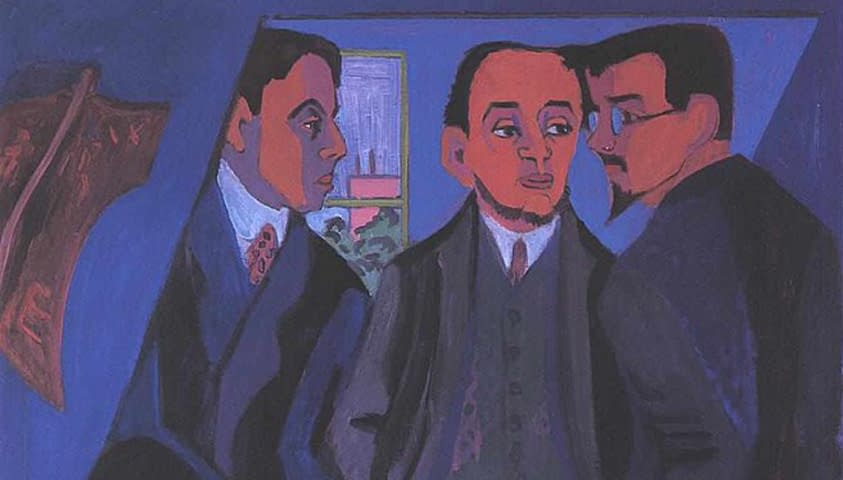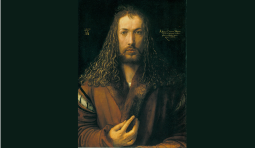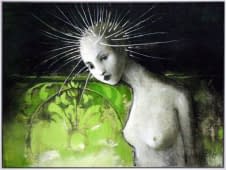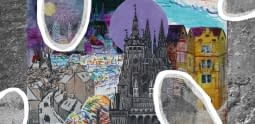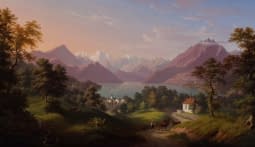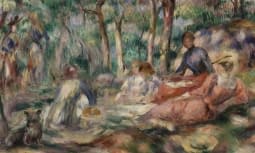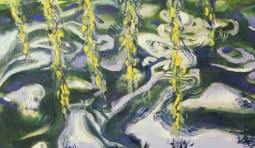Artists' Groups: Their History and Which ones to discover on art24
Are Artists Loners?
New exhibitions, new artworks, new artists. You stroll through the exhibition hall and pause in front of selected works. If you particularly like the art, you step closer and examine it in detail. Perhaps your gaze wanders to the small exhibition sign next to the work and you read the title of the art and the name of the artist. You will notice that it is often a single name.
"Could a work not also be by several artists?" you ask yourself.
The answer is yes! Just think of the greatest artists of the late 20th century, such as Andy Warhol and Jean-Michel Basquiat, who created numerous paintings together in New York in the 1980s. Alternating and each working separately, they painted several works at the same time while remaining true to their personal style. Warhol's pop art symbols and Basquiat's graffiti-style expressionistic elements resulted in completely new, unique compositions, and their joint work is a wonderful example of a small group of artists.
And what about groups of artists who do not create a common oeuvre, but pursue their own artistic style in their joint work?
One group that pursued this narrative in the German-speaking world was the "Brücke", which existed from 1905 to 1913 (Fig. 1). Together, the artists' collective developed their own expressionist style and influenced each other in their personal creative process.
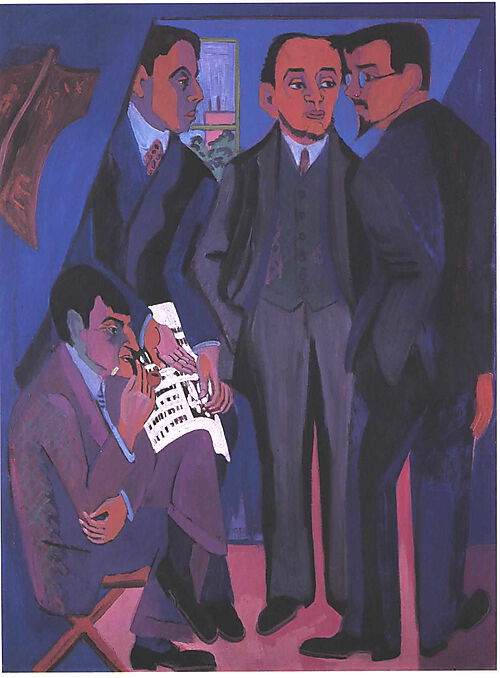
Fig. 1: Ernst Ludwig Kirchner, A Group of Artists, 1926-27. Photo: ©www.kunst-zeiten.de/Kuenstlergruppen.
However, it becomes even more abstract when one considers the association of several artists into organisations or circles. Instead of pursuing a common style, collective exhibitions and memberships promote contacts and relationships with other artists.
The aim of artists' organisations is, on the one hand, mutual artistic promotion, motivation and inspiration and, on the other, the joint creation of something new and "avant-garde". Artists from very different fields are represented: whether from sculpture, painting or graphic art. They unite and collectively exhibit, create new projects together and engage in constructive discussions.
Historical Background
Let's go back to the beginning of history: for centuries, art was under the care of the church and the ruling monarchy. Commissioned works were expected to reflect the self-image of the church or the monarch and to fulfil the taste and expectations of the citizens. In ancient Rome, there were so-called collegia (workshop associations) in which craftsmen, mostly motivated by religion, joined together to represent their interests to the outside world. In the Renaissance of the 15th and 16th centuries, political commissioned art reached its peak. However, even after this, artists were not free, but continued to be bound to politically commissioned art.
Until the French Revolution of 1789, politics determined the direction of art. The state-founded academies, which trained the artists and to which the artists remained loyal, determined what "good" art was. It is therefore not surprising that, over time, artists developed the need to rebel against the state and the regulations in art. In the 19th and 20th centuries, the first associations emerged that opposed the academic understanding of art. They pursued their own conception of art and their own style of painting. The first of these artists' alliances included the Nazarenes (Lukasbund or Brotherhoodof St. Luke), the Pre-Raphaelites and painters' colonies as well as the French Barbizon School.
The artists whose art was rejected by the academies protested by exhibiting their rejected art in public for the first time. It was the Impressionists, for example, who presented their unappreciated art as a protest at the Salon des Refusés in 1850. Further groups were formed that turned away from the art style that was perceived as "good" at the time: the so-called Secessions. The first secession was founded in Munich in 1892, in Vienna in 1897 and in Berlin in 1898. This movement, which favoured Art Nouveau, led to new reforms and a new cultural policy in Germany and paved the way for Expressionism.
From then on, new groups of artists were founded that were stylistically similar. On the 7th June 1905, the above-mentioned Brücke was founded in Dresden by the artists Erich Heckel, Ernst Ludwig Kirchner, K. Schmidt-Rottluff and Fritz Bleyl, whose members also included Cuno Amiet and Max Pechstein. They created their own group style and turned away from Impressionism. A few years later, Franz Marc and Wassily Kandinsky joined forces with like-minded artists in 1911 to form Der Blaue Reiter (The Blue Rider) and simultaneously heralded the beginning of modernism. Elisabeth Ivanovna Epstein, who is represented on art24, acted as a mediator between the Parisian artists and the founders of Der Blaue Reiter. Her role can be traced back in the blog "Artists Influence Artists Part 3". The film "Saved from Oblivion: Elisabeth Ivanovna Epstein" also offers a closer look at the artist's life. These groups did not develop a common style, but rather saw themselves as exhibition communities that sought to promote a renewal of art and present their own art-historical ideas to the outside world. In 1924, a group of artists in Paris joined the writer André Breton and his "Manifesto of Surrealism" published that year. The so-called "Breton Group" included Max Ernst, Jean Arp, Salvador Dali, René Magritte, Antonin Artaud, Marcel Duchamp, Paul Klee, Joan Mirò, Pablo Picasso and others.
Switzerland developed in parallel with other European countries: In Switzerland, the Zurich Artists' Association was founded in 1787, the first official artists' community that sought to distinguish itself from the public art school. This was followed in the 19th century by the Basel Artists' Society, the Geneva artists' colony Cercle des artistes and the Society of Swiss Painters and Sculptors (and Architects), known today as visarte. Around 1900, artists from various nations came to Ascona and founded an artists' colony on Monte Verità, the Mountain of Truth. Painters, writers, poets, politicians, emigrants and social outsiders came together there and lived their lives independently in their own way. Otto Gross, Hermann Hesse, Hans Arp, Hans Richter, Marianne von Werefkin, Alexej von Jawlensky, Ignaz Epper and many others were drawn to Ticino and this special mountain. King Leopold II of Belgium, the composer Richard Strauss, Konrad Adenauer and others are also said to have visited Monte Verità. Over the course of the 20th century, other artist communities were formed, such as the Lausanne Société romande des femmes peintres et sculpteurs, the Zurich Moderner Bund and the Allianz, the Basel artist communities Rot-Blau I and II, Gruppe 33 and Kreis 48.
Artists' Groups on art24
Kreis 48 consisted of a group of Basel artists who founded an association in 1950 on the initiative of the artist Max Kämpf. The painter Hans Weidmann (1918 - 1997) was one of the 16 members of the "48-ers". Other members were Peter Moillet, Johann Anton Rebholz and the only woman in Kreis 48: Hannah Salathé. Figuration was a central theme for the members.
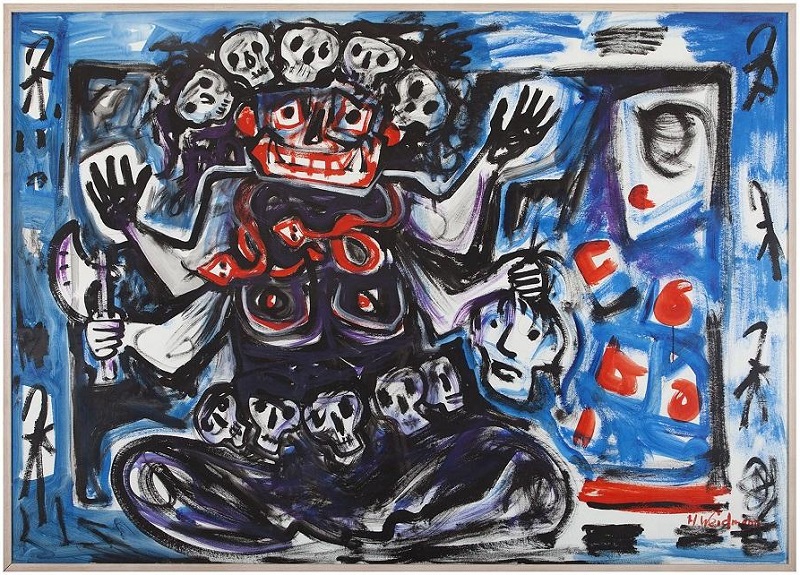
Fig. 2: Hans Weidmann, Shiva in a Fire Dance, Acrylic.
In 1948 they exhibited together at the Galerie Beyeler and in 1950 at the Kunsthalle Basel. Although the group officially disbanded in 1976, they exhibited for the last time ten years later. Commemorative exhibitions and retrospectives followed in the 2000s in Moutier and Riehen, Basel.
Another Swiss artists' group that lists some art24 artists of the 20th century is the Winterthur Artists' Group. It was founded on the 5th April 1916 by Fritz Bernhard and others and today counts around 80 artists among its members. The Winterthur group has been run as a collective since 2017. The represented artist Henri Schmid presided over the group from 1970 to 1980 and was also a board member of the Gesellschaft Schweizerischer Maler und Bildhauer in Zürich (GSMBA) (Society of Swiss Painters and Sculptors in Zurich). In 1973, he was recognised by the city and awarded the Karl Heinrich Ernst Foundation Art Prize.
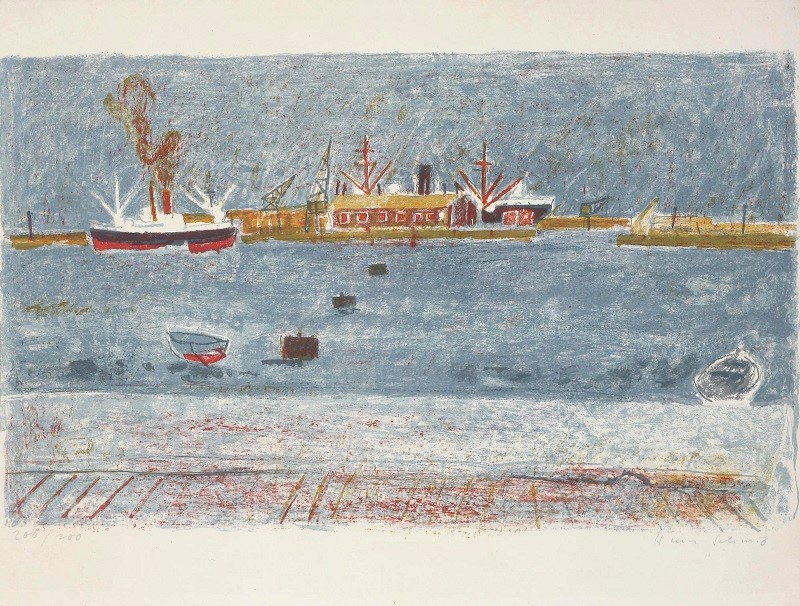
Fig. 3: Henri Schmid, Harbour of Alicante (200/200), Lithography.
Rudolf Zender also joined the Winterthur artists' group in 1932 and made his first appearance as a member of the group just two years later.
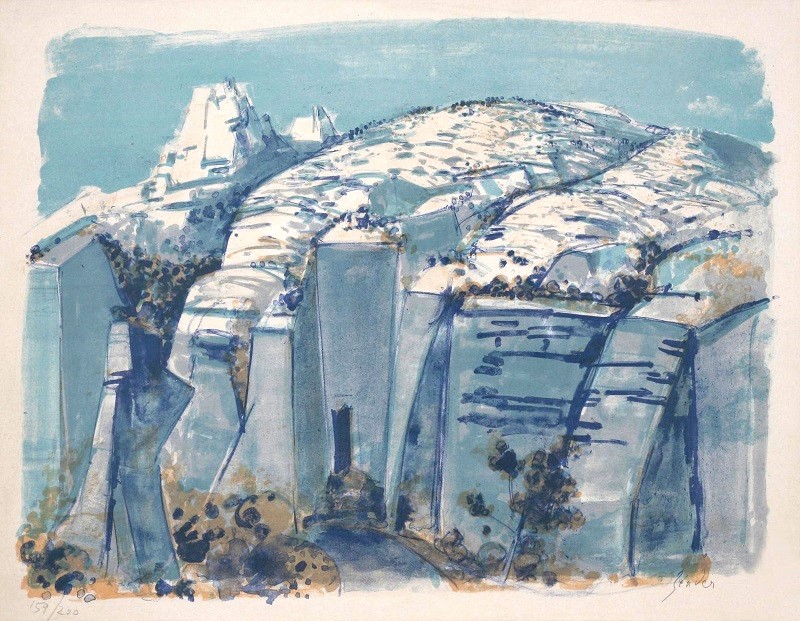
Fig. 4: Rudolf Zender, Mountain Landscape (159/200), Lithography.
The Vereinigung mund- und fussmalender Künstler (VDMFK) (Association of Mouth and Foot Painting Artists) is a special organisation. It supports physically disabled or ill artists who paint with their mouth or feet instead of their hands. The artist Prof. Arnulf Erich Stegmann, who himself painted with his mouth, played an important role in the founding of the association in 1957. Stegmann was the initiator and became President of the VDMFK alongside board members Corry F. Riet, Charles Pasche Schweiz and Dr. Herbert Batliner. When it was founded, a total of 18 artists were represented; today, the Association has up to 750 artists from 76 countries.
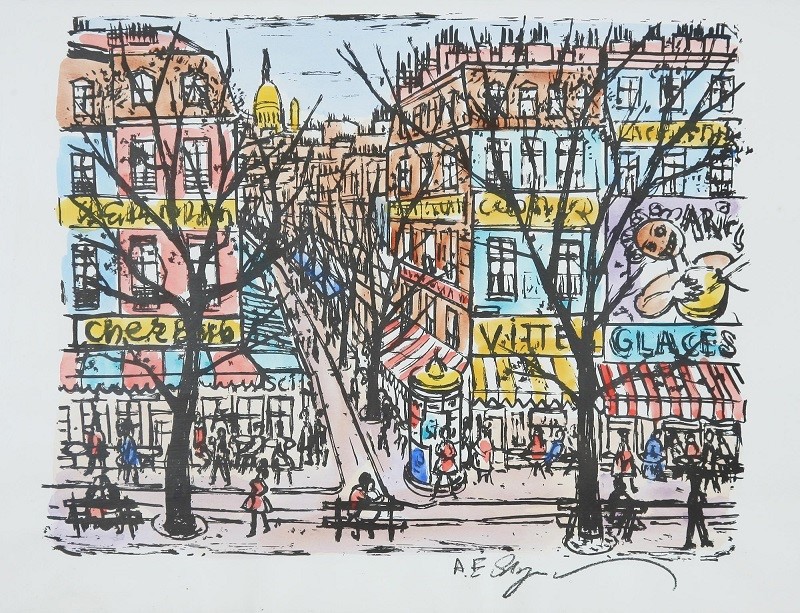
Fig. 5: Arnulf Erich Stegmann, Viale a Montmartre, Ink and watercolor.
The Italian artist Miro Wladi supported the VDMFK Association. He wanted to make the artists known in Italy and regularly organised and curated exhibitions of Italian mouth and foot painters from 1961 onwards. Thanks to his commitment, including the financing of the vernissages, the association attracted a great deal of attention in the media, which led to the promotion of mouth and foot painters. It was thanks to him that a VDMFK gallery was set up in Florence in 1966 and a permanent exhibition in Milan was made possible. In 1969, Miro Wladi was appointed the Association's first Honorary Member.
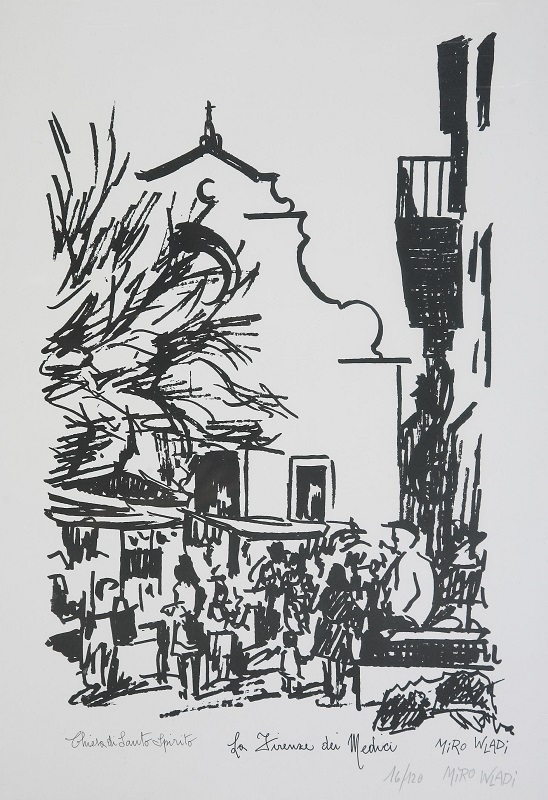
Fig. 6: Miro Wladi, Chiesa di Santo Spirito" from the series: "La Firenze dei Medici (16/120), Lithography.
Another special feature of art24 is the presentation of numerous Czech and Slovak artists. Most of them are or were members of the Mánes Union of Fine Artists (S.V.U. Mánes). The association, named after the painter Josef Mánes, was founded in 1887 and is still active today. The following artists from art24 were important and significant members of the association: Stanislav Ježek, Vilém Nowak, who was also represented in the Prague nd Munich New Secession, Jaroslav Grus, František Jiroudek, František Tichý, Paderlík Arnošt, Ota Janeček, Josef Jíra (also a member of the artists' group "Group M57") and Orest Dubay Senior. Dubay was an important graphic artist of the 20th century and a member of the "Association of Artists and Friends of Graphic Art" and the "Club of Graphic Artists" since 1948.
The SČUG HOLLAR group was a very important association of Czech graphic artists. It was founded in Prague in 1917 by T. F. Šimon, Karel Vik and V. H. Brunner, among others. The name of the association goes back to the well-known engraver Václav Hollar. The association of graphic artists generally aimed at the technical improvement of graphic works and the continuation of the 19th century tradition. The first members' exhibition took place a year after the association was founded. From 1923, the artists' catalogs, the HOLLAR Gallery collection and graphic sheets were published. From 1956, it promoted experimental trends and the representation of Czech graphic art abroad.
Today, the HOLLAR Society has a total of 161 members, consisting mainly of graphic artists and some art historians and artists. On art24, some contemporary Czech artists are among the members of the society: Emílie Tomanová, Jaroslava Severová, Kamil Lothàk, Karel Vysušil, Jan Smetana, Karel Demel, Jaroslav Chudomel, Jiri Anderle, Olga Čechová, Orest Dubay Senior, Ota Janeček, Nadezda Plíšková and Pavel Sukdolák.
Let's turn our attention from the Czech Republic back to Switzerland: Lucerne art lovers can't get past this group founded in 2020: Helen Eggenschwiler and Karyna Herrera form the collective "Make Art Happening". The aim of the collective is to promote artists from Kriens and organize group exhibitions.
Artist Duos on art24
Artist duos are a slightly different form of artist association. These are artists who come together and create art together without belonging to a public artists' association. José and Minò are an artist duo on art24 who teamed up for a specific joint art project. They met at an exhibition by the artist Minò in Lausanne and have maintained a friendly relationship ever since.
What happens when you bring together Minò's painting and José Gaggio's photography? The product of their artistic partnership is a new kind of surrealistic, magical-realistic world, which was first presented in the art book "Liebeserklärung an Beckenried" (Declaration of Love to Beckenried) and can also be admired on art24.
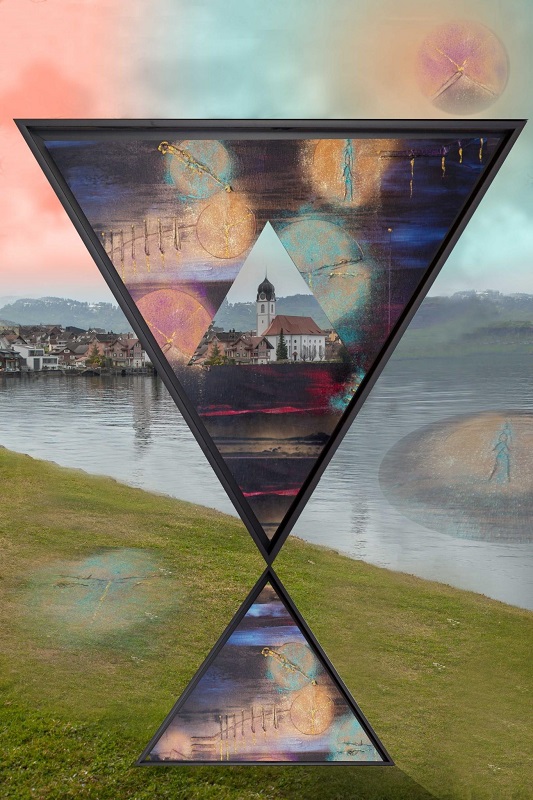
Fig. 7: José and Minò, A special kind of art book. A declaration of love to Beckenried, mixed media.
Now browse through the artists on the platform yourself and perhaps discover further connections between artists. In the three-part blog "Artists Influence Artists", you can read about how artists have directly influenced each other, illustrated by well-known examples from the art scene. You will be taken on a journey that begins in Spain and New York, where you will meet art24 artists Eugen Meier, Hans Binz and Shane Bowden, introduced to artists Cuno Amiet, Giovanni Giacometti and Erich Heckel in Paris and Berlin and finally end in Munich and Switzerland, where Elisabeth Epstein and Jean Tinguely await you.
Further readings and links:
Künstlervereinigungen | Moderne Kunst - verstehen! (kunst-zeiten.de)
Künstlergruppen der Moderne | Moderne Kunst - verstehen! (kunst-zeiten.de)
Graewe, D. (2014). Die Kunstfreiheit in der deutschen Geschichte unter besonderer Berücksichtigung der Künstlervereinigung »Brücke«. Zeitschrift für Kunstgeschichte. Link: Die Kunstfreiheit in der deutschen Geschichte unter besonderer Berücksichtigung der Künstlervereinigung » Brücke « on JSTOR
